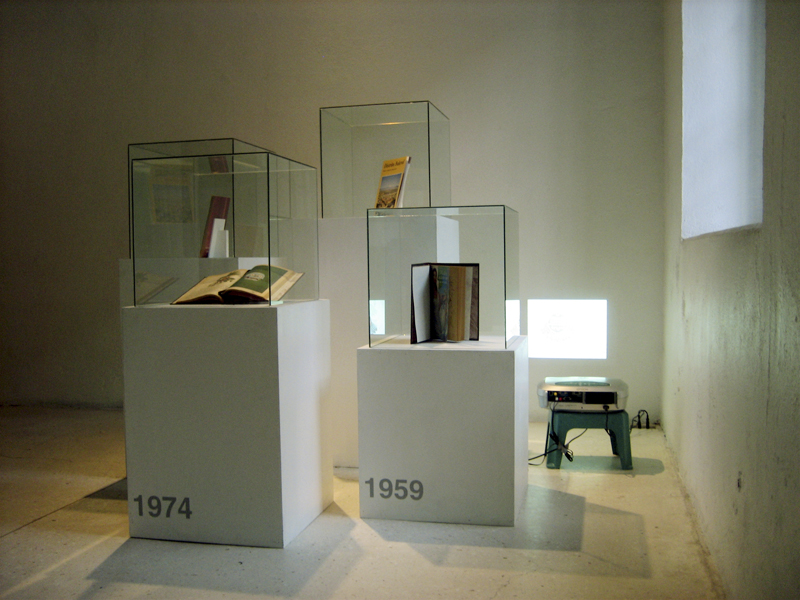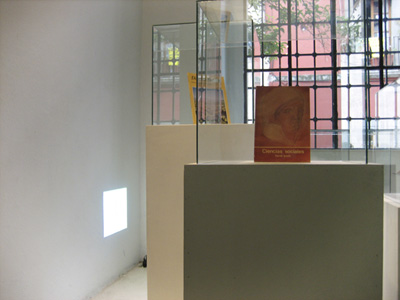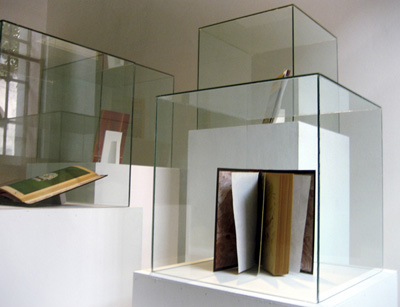
In the second installation room, the viewer encountered four pedestals each displaying a textbook. These were the four different editions of the third grade history textbooks1 used in Mexican public elementary schools from 1959 until the present. In 1959, Mexican president Adolfo López Mateos stipulated that the government would directly control the production and distribution of the textbooks used in the Mexican public school system. With the help of special teams in each academic subject, such as History, Mathematics, Biology, etc., the state printed and distributed these books to every elementary and middle school student free of charge. This heroic effort continues today and has prevailed despite the fervent criticism that every new revision receives. Three major revisions have taken place since 1959. Each of them corresponds to presidential desires to improve education according to their beliefs: Luis Echeverría in 1972, Carlos Salinas de Gortari in 1992, and Vicente Fox in 2002.

The revisions of the History course textbooks (during certain periods these textbooks were redesignated as books for “Social Science” or “History and Geography”) have always been the subject of the strongest attacks. Walter Benjamin's famous quote “There is no document of civilization which is not at the same time a document of barbarism” in quite relevant here here. In order to promote cultural integration– a fundamental ingredient for development and empowerment within a global economic order– Mexico's diversity is seemingly de-emphasized in the curricula. Likewise various indigenous cultures are gradually effaced from the syllabus and the presentation of a pre-Hispanic past is progressively neglected.
